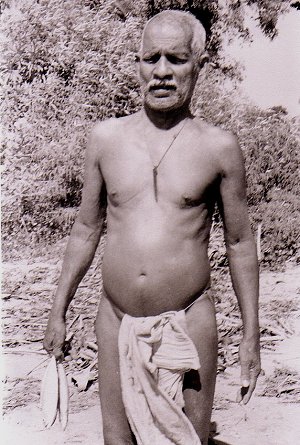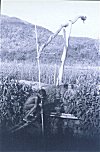The Kaupina
by Vikas Kamat
First Online: June 14, 2005
Page Last Updated: December 07, 2024
Kaupina (a.k.a. kowpina, kachcha) is a distinctly Indian form of clothing from ancient times. It is a loin cloth passed between the legs and held by a string at the waist, just enough to cover the private parts. The remainder of the cloth acts as a throw or apron (see picture below).
K.L. Kamat/Kamat's Potpourri
The Kaupina as Attire
Picture of an almost naked fisherman and his catch
Till recent times (1970s and 1980s) laborers, tribals, and even women (during their menstrual cycles) wore the kaupina, but its use has decreased after the arrival of machine-made undergarments. In some rural parts of India one still (year 2005) can come across priests, fishermen, craftsmen, and ascetics wearing only the kaupina.
Kaupina in Indian Culture
Kaupina features often in Indian literature. It is the attire of Lord Shiva, and sadhus who emulate him wear the kaupina as the sole clothing as they beg or meditate. It is possible that people who wore other attires (like pitambar or saree ) also wore kaupina as an undergarment.
Many illustrations of India drawn by visiting Europeans in 18th and 19th centuries feature men working in a kaupina -- either by choice or out of poverty. Many medieval poets and saints are also described as "clad in kaupina".
A part of the Hindu initiation ceremony involves teaching the boys how to wear the kaupina.
![]()
See Also:
- Wonder-bras of another era -- Did ancient Indian women wear bras? Were they stitched? Were they padded?



